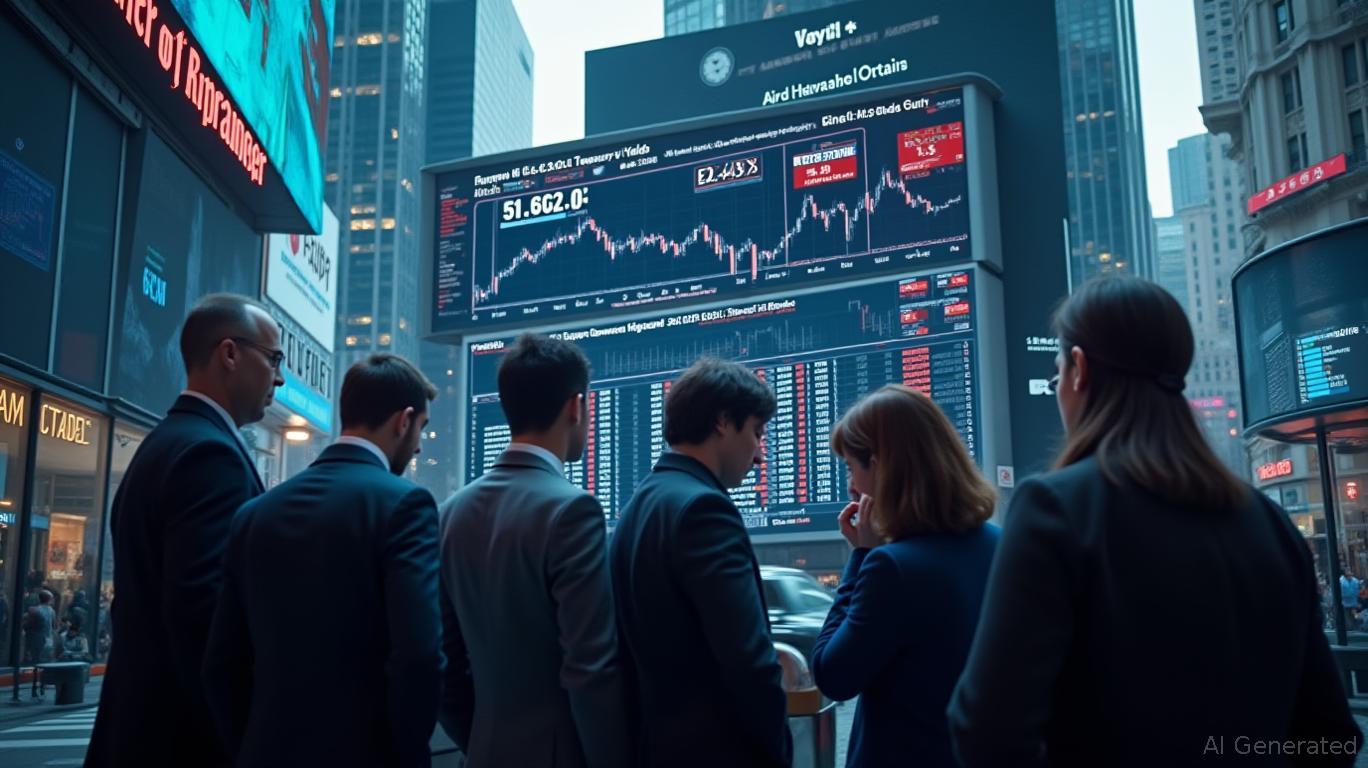Trade Tensions: Navigating Volatility and Capitalizing on Resilient Sectors
The U.S.-China trade war has reignited with renewed ferocity, as President Trump's May 30 accusation that China “totally violated” the May 12 tariff truce has sent shockwaves through global markets. With tariffs on Chinese imports fluctuating between 30% and 145% and Beijing retaliating in kind, investors face a landscape of heightened uncertainty. Yet amid the turmoil, opportunities are emerging for those willing to look past short-term volatility and focus on sectors insulated by domestic policy, geopolitical necessity, or structural demand. Here's how to position your portfolio for both near-term turbulence and long-term gain.

The Immediate Impact: Markets React to Broken Trust
The tariff truce—initially hailed as a diplomatic win—collapsed as Trump accused China of backtracking on commitments. The S&P 500 and Nasdaq fell sharply, with tech stocks and retailers bearing the brunt. Tech firms reliant on Chinese supply chains (e.g., semiconductor manufacturers) and retailers sourcing from Asia faced margin pressures, while investors fled equities deemed exposed to trade retaliation. Meanwhile, the 10-year Treasury yield surged past 4.5%, driven by fiscal deficit fears and
downgrade of U.S. credit. This created a stark contrast: equities wobbled, but bonds—despite rising yields—remained a haven for risk-averse capital.Vulnerable Sectors: Tech, Retail, and the Battery Dilemma
The clean energy transition is now caught in crosshairs. While solar and wind sectors have weathered tariffs through domestic production, the BESS market faces existential challenges. Over 95% of critical battery cells are imported from China, and even reduced tariffs have left project costs 20% higher than pre-trade war levels. Companies like Tesla (TSLA) and Rivian (RIVN) face delayed timelines or cost overruns unless they pivot to domestic suppliers—a process that could take years. Similarly, tech hardware and consumer goods firms (e.g., Apple (AAPL), Walmart (WMT)) face margin squeezes as input costs rise and trade routes fragment.
The Resilient Sectors: Energy's Double Play and Treasury Yields
Amid the chaos, two sectors stand out as pillars of stability. First, energy:
- Nuclear Power: Advanced reactor developers like Oklo (OKLO) have surged 389% YTD, backed by Pentagon partnerships and tech giants' commitments to carbon-free data centers.
- Solar and Wind: Despite tariff-driven cost increases, IRA subsidies and state mandates keep installations on track. Solar's domestic manufacturing base—bolstered by 10 years of policy support—offers a hedge against supply chain risks.
- European Equities: The STOXX 50 Index hit all-time highs as German fiscal stimulus (€500B infrastructure fund) and valuation discounts lured capital. Compare this to U.S. small caps, which fell 2.3% in May.
Second, U.S. Treasuries: Despite Moody's downgrade, the 10-year yield's climb to 4.5% offers a rare income opportunity. While fiscal deficits are a risk, Treasuries remain the world's deepest liquidity pool. Pairing short-duration bonds with energy stocks creates a defensive yet growth-oriented portfolio.
Strategic Opportunities: Where to Deploy Capital Now
- Energy Transition Plays:
- Buy solar and wind developers (e.g., NextEra Energy (NEE)) with domestic supply chains or government contracts. Avoid BESS-heavy projects until U.S. manufacturing scales.
Go nuclear: Oklo's partnership with Microsoft (MSFT) to power data centers signals a secular shift toward energy security.
European Equity Re-Rating:
Rotate into STOXX 50 stocks like Siemens Energy (SIE) or TotalEnergies (TTE), which benefit from energy diversification and fiscal stimulus.
Treasuries for Ballast:
- Short-duration Treasuries (e.g., 2–5 year maturities) offer yield without excessive rate risk. Pair with energy equities for growth.
Risks to Monitor
- IRA Rollbacks: Congress's potential to reduce tax credits could stall clean energy projects.
- Trade Policy Volatility: The August 12 truce expiration looms—a “wait and see” stance on tech/retail until then is prudent.
- Global Supply Chain Fragmentation: Companies reliant on Chinese components (e.g., Apple's iPhone supply chain) face higher costs until alternatives emerge.
Conclusion: Capitalize on Divergence, Not Despair
The trade war's resurgence is a test of investor discipline. While tech and retail face headwinds, energy's resilience and Treasuries' yield offer a path to outperformance. The key is to avoid panic selling and instead use dips in energy and European equities to build positions. The path to long-term gains lies in sectors shielded by policy, geopolitical demand, or fiscal stimulus—not in chasing volatility in trade-exposed assets. Act now to position your portfolio for the next phase of this geopolitical and economic reset.

Comments
No comments yet